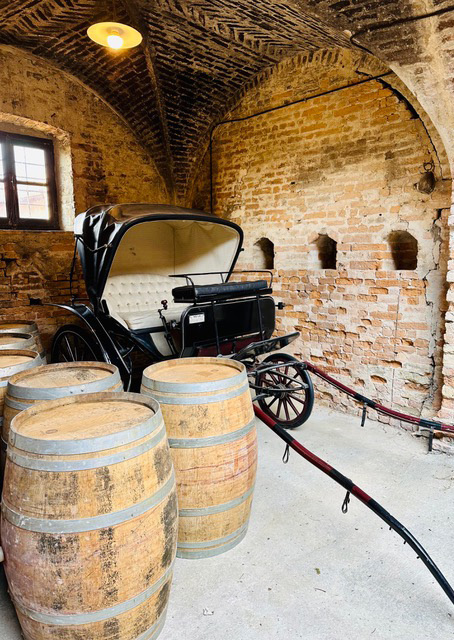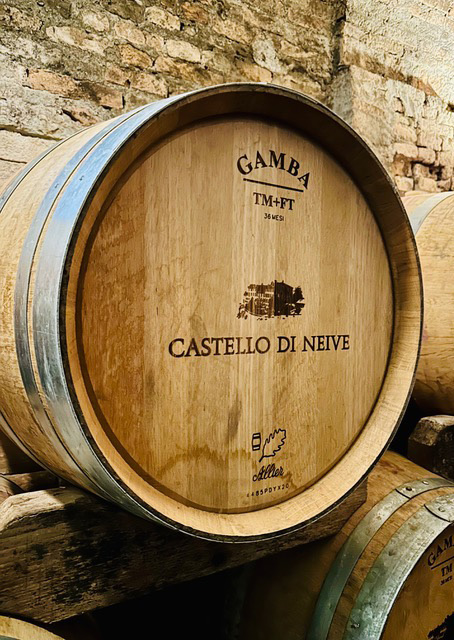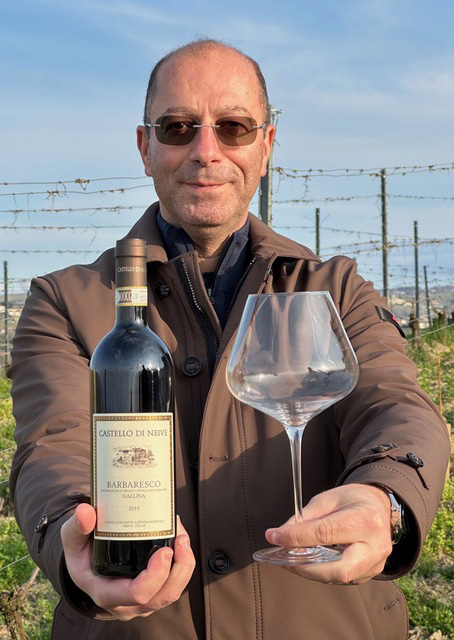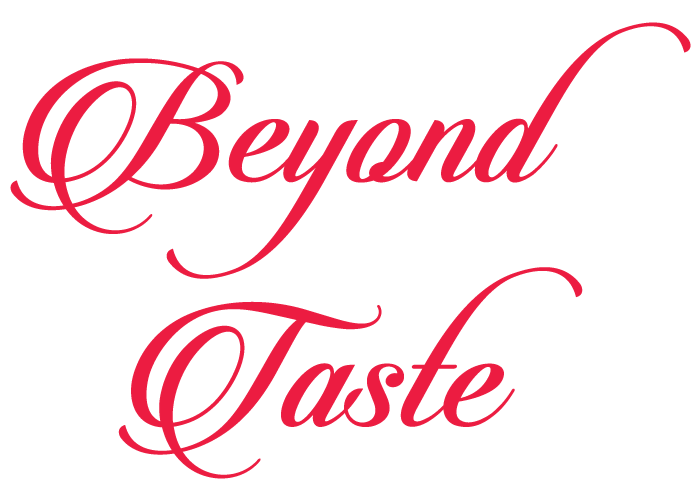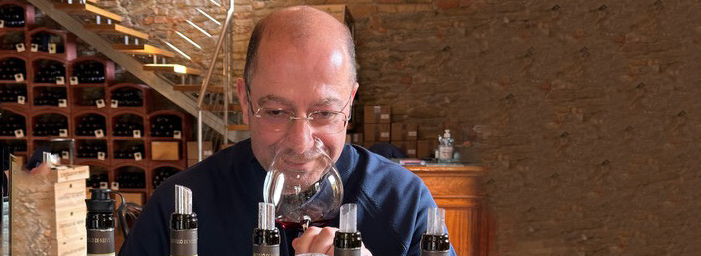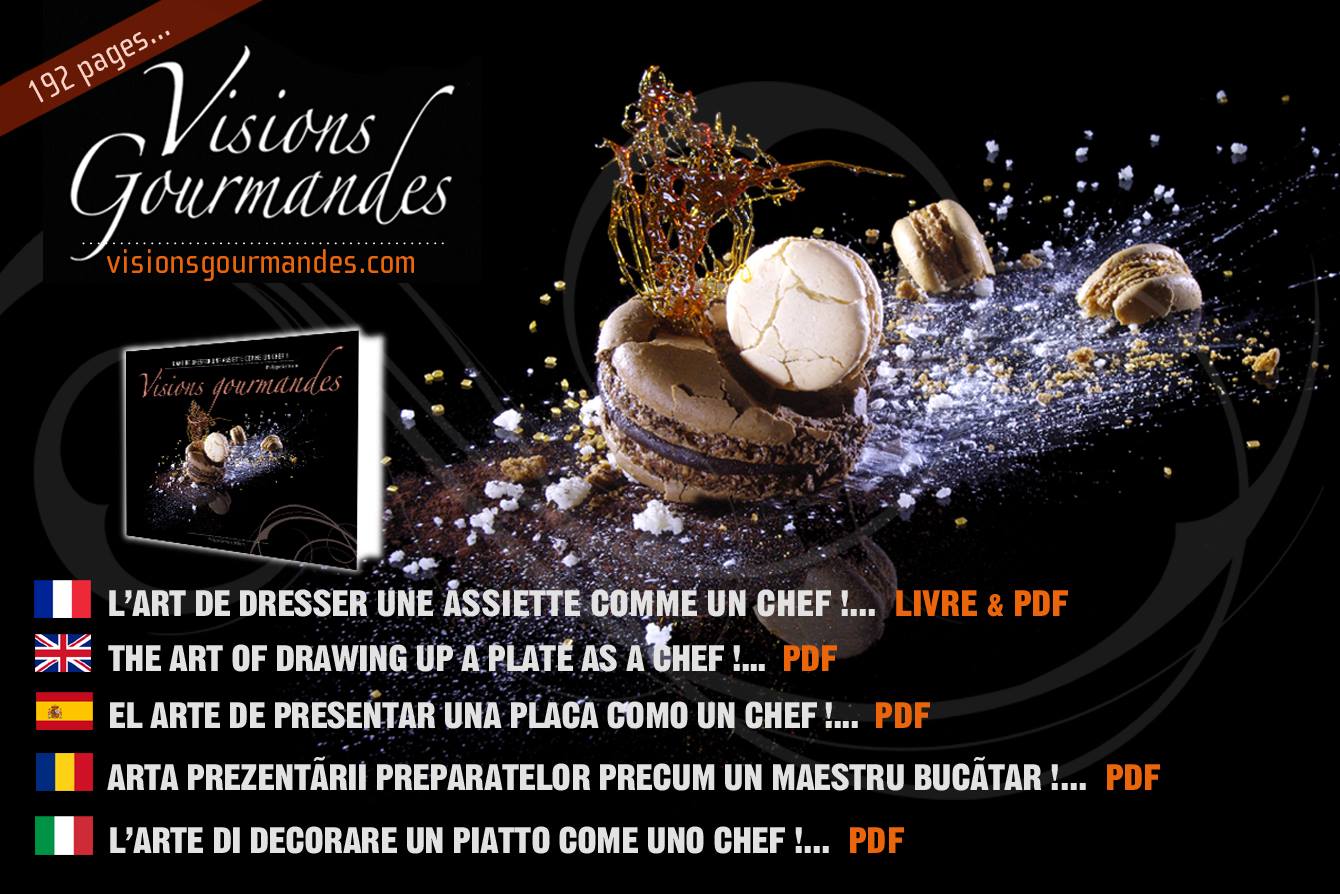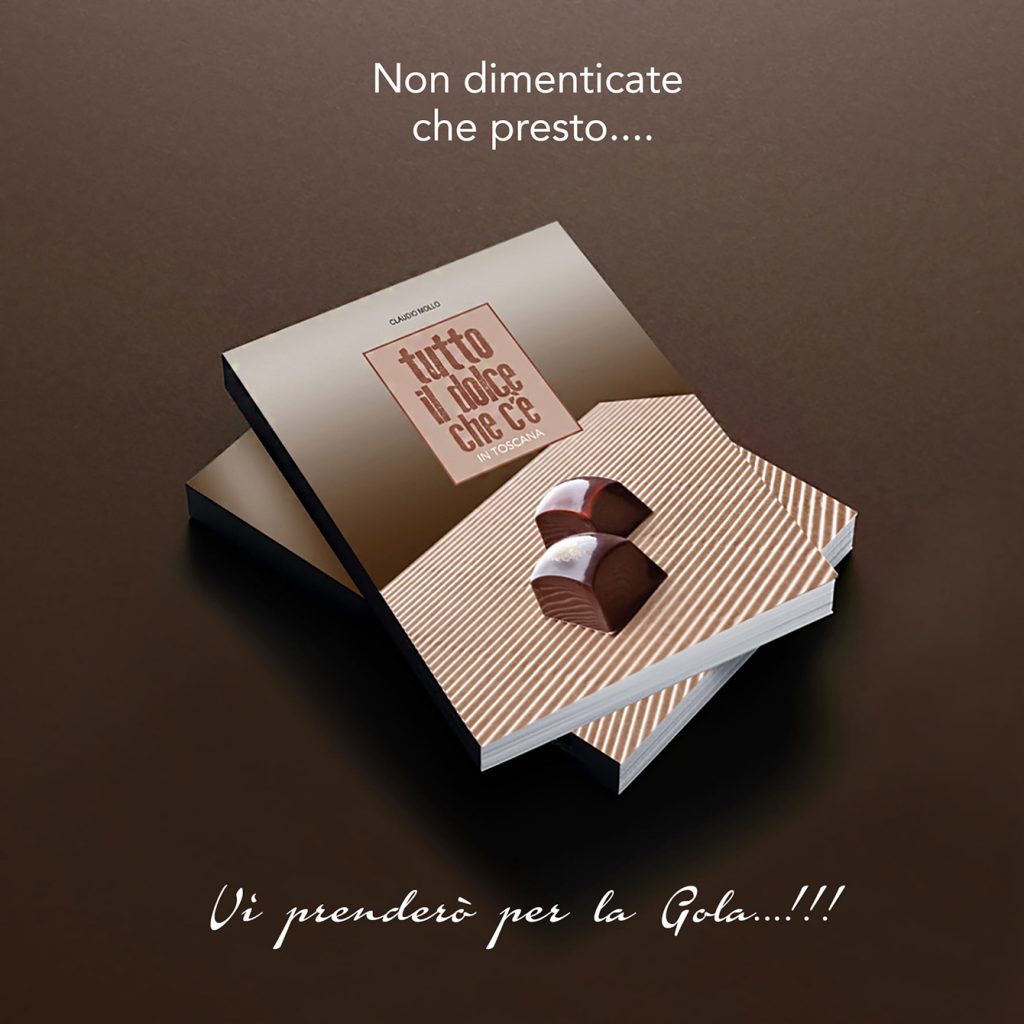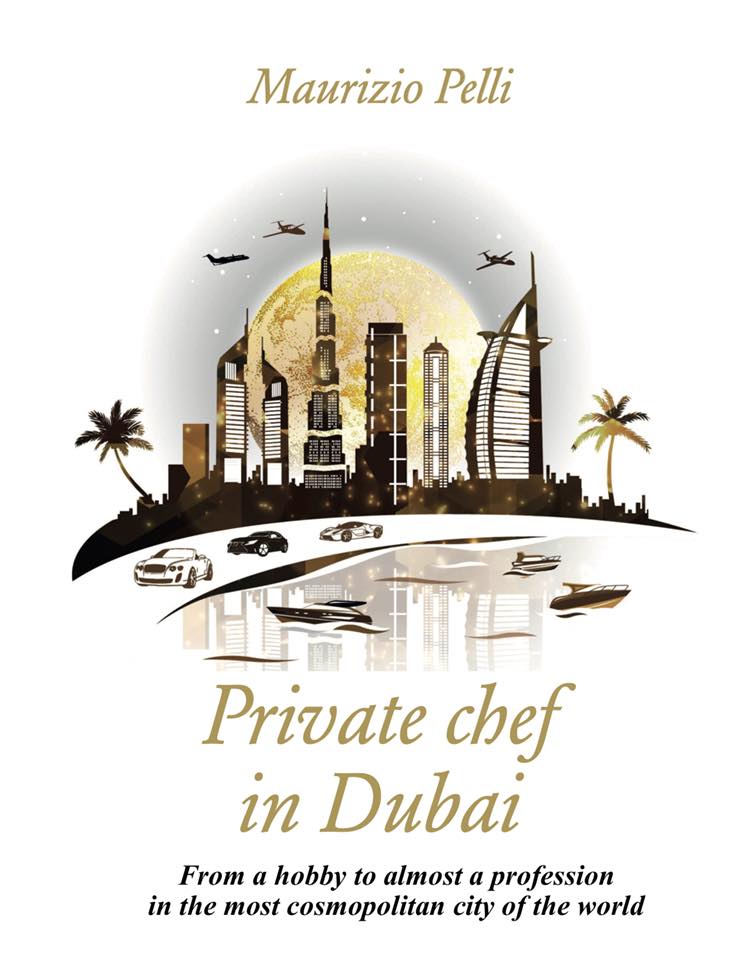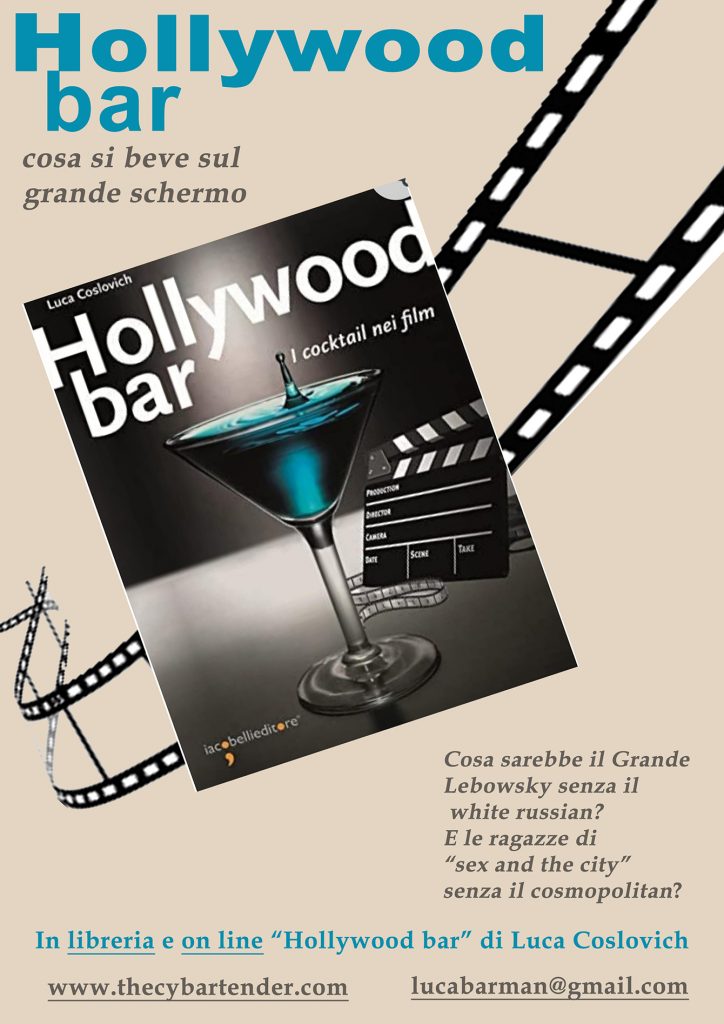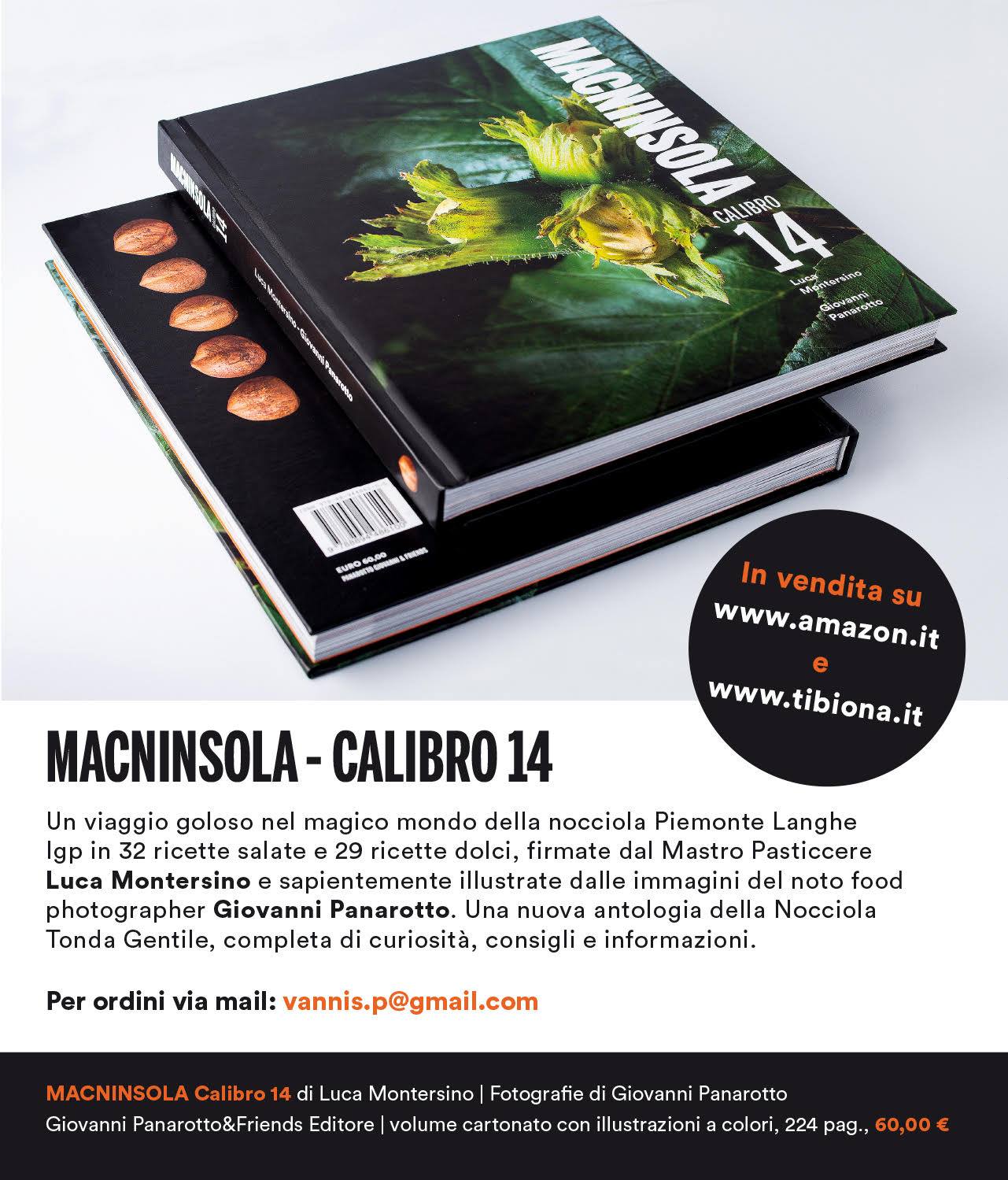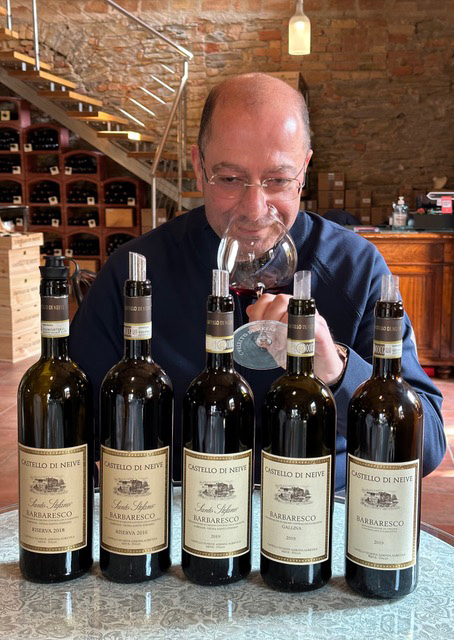
Article and Photos by Marco Alessandro Felicissimo Sommelier
The Barbaresco Wine Area
Castello di Neive winery is located in the famous Barbaresco wine area, in the so called Langhe, one of the most famous wine districts in the world located in the Italian north-western region of Piedmont. In particular, the Langhe region islocated in the southern part of Piedmont, close to the Maritime Alps and the Ligurian Apennines. The name, of Celtic origin, means “strips of land” and refers to the elongated hills, often with very steep sides, arranged so as to run parallel to each other to form many deep and narrow valleys. The Langhe area is one of the most generous regions in the world for the quality and variety of wine production due to the particular geographical location, the suitable climate and the rich subsoil that distinguish these hilly areas and make them an environment with a very abundant biodiversity.
The Barbaresco wine production area is smaller than the Barolo one but not less important. The appellation territory is made up of just 4 municipalities:Barbaresco, Neive and Treiso for the entire municipalities, and Alba only for the hamlet of San Rocco Seno d’Elvio.
Barbaresco’s history dates back to 1894, when the Cantina Sociale di Barbaresco was founded. Before that, Nebbiolo grapes were mostly used to make Barolo. Domizio Cavazza, the organisation’s founder, agronomist and oenologist from Modena, played a key role in the launch of the new wine. Barbaresco wine was immediately appreciated, but the phylloxera epidemic, and then the First and Second World War put a stop to the new wine’s production, additionally, after Cavazza’s death in 1913, there was no one to promote the wine. Thanks to a new generation of dynamic winemakers, including the pretty famous Bruno Giacosa and Angelo Gaja, in the late 1950sBarbaresco was brought back to life. In addition, the local parish priest, Don Fiorino Marengo, founded the Produttori del Barbaresco cooperative winery, the successor to Cavazza’s original vision to make outstanding wine and stop the exodus of young farmers who were abandoning the countryside.
In the late 1960s, the Gaja and Bruno Giacosa wineries began to export their wines successfully. The Produttori cooperative, which now controls more than 100 hectares in the Barbaresco wine area, became one of the most respected wineries in Italy and inspired more landholders in Barbaresco to return to their vineyards to make quality wine. The Produttori del Barbaresco cooperative has now 51 members.
Both the Barbaresco and the Barolo wine regions are located on the right bank of the Tanaro River, although the slopes in Barbaresco are gentler and lower than in Barolo, rising only to 500 meters in Treiso. The Barbaresco vineyards cover a total of 684 hectares. The soils are calcareous marl, with sand, limestone, and clay present. Although the Barbaresco area is homogeneous, it can be divided into two parts according to the prevailing soil types. The soils of Treiso, San Rocco Seno d’Elvio and Neive, south of the town centre, are characterised by layers of compact grey marl alternating with layers of sand.The soils of Barbaresco and the part of Neive that is leaning against Barbaresco are characterised by calcareous bluish marls. In general, Barbaresco soils are richer in nutrients than Barolo ones, hence the vines do not produce tannin-rich grapes like those in the Barolo appellation. This is of course a generalisation. Despite the appellations being so close, Nebbiolo’s sensitivity to terroir does indeed make Barolo and Barbaresco different. Both wines are made from 100% Nebbiolo grapes and they exhibit the characteristic flavours of the grape and structure which is typical to Nebbiolo. Barbaresco can be generalised as more elegant with less tannins, making it a bit more approachable when young. However, when we speak about Nebbiolo grape, even the single vineyard crus can be very different from one another. A cru like Montestefano in the Barbaresco village can be just as austere and structured as a Barolo.
The village of Neive and the Castello di Neive Estate
Neive, one the most beautiful villages in Italy, is divided into two distinct areas: Borgonuovo, the more modern and commercial part, and Neive Alta, the picturesque historical centre.
All its beautiful baroque and eighteenth-century palaces, owned by noble Piedmontese families, wind their way up to the top of the hill where a castle once stood. Every corner, square and garden in the inhabited area is of high value, infused with an ancient and well-organised atmosphere that blends in perfect harmony with the surrounding hills, where vineyards as beautiful as gardens can be found.
Neive is named after gens Naevia, the ancient Roman noble family owner of local lands. Because of its position equidistant from both Alba and Asti, Neivewas often the site of confrontations between the two towns and in 1274 the old castle was destroyed in a battle between them, along with others in the vicinity. The village historical centre still preserves its Medieval plan made of cobbled roads leading up to Torre dell’Orologio (the clock tower), elegant cotto tiled buildings, and red roofed houses leant one against the other.
Roads to Neive cross the typical Langhe landscape made of vine cultivated hills. From a food and wine perspective, Neive is famous as the ‘land of four wines’; four DOC (controlled designation of origin) and DOCG (controlled and guaranteed designation of origin) wines are produced on Neive hills: Barbera d’Alba (DOC), Dolcetto d’Alba (DOC), Barbaresco (DOCG) and Moscato d’Asti (DOCG).
Though there are numerous other appellations here, these have contributed most to the history of the area.
The Castello di Neive estate has a long history which has always been linked for centuries to Neive town and its wines. I visited this winery and tasted their wines last March. Located within the beautiful 18th-century castle, the winery has been owned by the Stupino family since 1964. Of the 60 hectares of land, all located in the municipality of Neive, 26 are for the cultivation of grapes and 20 for hazelnuts. All wines are made using only grapes owned by the winery.Among the vineyards deserves a special note of merit the Santo Stefano one, already mapped in the Cabreo of the Castle of Neive in 1742 (Cabreo, or pheasance, is the juridical act of demarcating lands or estates), highlightinghow the exposure, slope, microclimate and soil are unique for Barbaresco and Barbera d’Alba. In 2012 Italo Stupino activated a second technical winery, always in Neive, in an ideal location for the optimisation of the wine making process. In 2016, “La Casetta del Castello di Neive”, located within the eighteenth century garden of the castle, was renovated and it is the place where visitors are welcomed and can start the winery tour or simply taste some of their wines.
Tradition together with research and innovation are the foundation of the Castello di Neive winery philosophy. Recently released photographs from the winery’s library show that, as early as 1904, Pinot Nero was being bottled at the castle, and that by 1925 Nebbiolo was recognised as a fine wine grape with varietal labeling. The Stupino family continues this tradition of cultivating and vinifying these noble varieties as well as the often overlooked Barbera, Dolcetto, Arneis, Riesling and Albarossa grape varieties. The winery’s approach to winemaking is about respecting the centuries-old heritage but at the same time adopting new technologies and continue with research activities, both in the vineyard and in the cellars. In the Barbaresco wine production area the territory is divided into 69 crus and, it is important to know that in the Barolo and Barbaresco areas the cru is called in Italian Menzione Geografica Aggiuntiva (MGA).
In Neive municipality territory there are 20 crus, in one of them, the cru Albesani, the vineyard Santo Stefanobelongs exclusively to Castello di Neive winery. This vineyard is exposed to South West and presents an ideal combination of insolation, altitude and soil composition, this is why wines made from grapes from the Santo Stefanovineyard are some of the most austere, elegant and prestigious Barbarescos. The Gallina cru, has its cooler side looking straight at the Vigna Santo Stefano, on the opposite ridge, facing South – South West. Wines made from grapes from the Gallina cru are of great finesse and roundness. The differencebetween the two crus was very noticeable during the tasting of Castello di Neive’s outstanding wines.
The Tasting
Pinot Nero iCortini 2019: 100% Pinot Nero. The first mention of this French grape variety in Piedmont was towards the end of the 1700’s, when the region was under heavy French influence. 12,000 bottles of this wine are produced yearly. Medium ruby colour. Aromas of ripe cherry followed by spices, wild strawberries and balsamic notes. On the palate the wine is crispy and dynamic, well balanced with a long and elegant finish.
Barbaresco Gallina 2019: 100% Nebbiolo. Annual production of 3,500 bottles. Beautiful bright garnet colour. On the nose, it is complex with aromas of red fruits, balsam, dried flowers, sweet spices like clove and cinnamon. On the palate, perfect correspondence between flavours and aromas. It is full, warm and round. The wine has a thick tannic frame with well-integrated tannins providing a velvety sensation and an incredible beautiful elegance.
Barbaresco Santo Stefano Riserva 2016: 100% Nebbiolo. 6,500 bottleproduced. Average vine age 50 years. The grapes for this wine come from the Santo Stefano vineyard which is known to make some of Piemonte’s finest Nebbiolo wines.
It has a medium garnet colour with reddish-brown reflections.
On the nose, opulent aromas of black cherries, eucalyptus, dried roses, licorice, potpourri, undergrowth, camphor, spice cake (cinnamon, cloves, nutmeg).
On the palate, it is full-bodied, austere and certainly still young but revealing class and longevity while featuring ripe marasca cherry, raspberry compote, licoriceand tobacco alongside a backbone of fine-grained velvety tannins.
A fresh acidity keeps the wine balanced and energised throughout the tasting. Harmonic and very persistent. It pairs well with elegant dishes such as grilled steaks with red wine sauces, slow-braised beef with onions, and roasted lamb.
Instagram: @marco_felicissimo_sommelier
